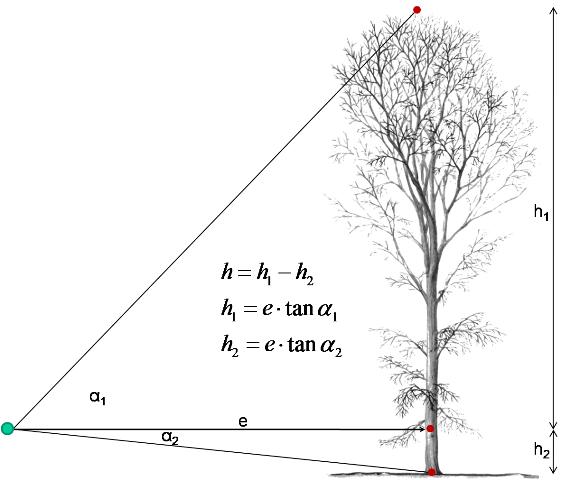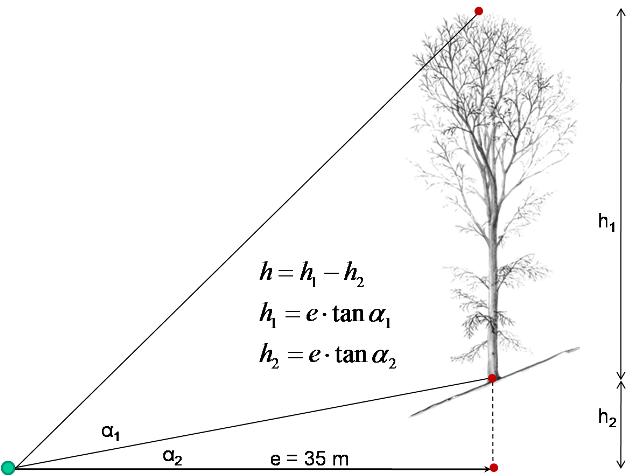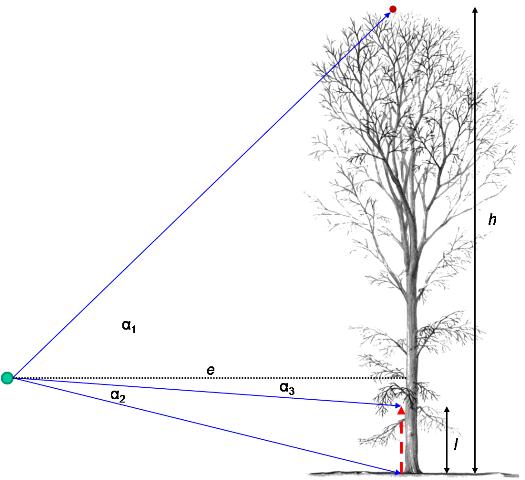The trigonometric principle
| sorry: |
This section is still under construction! This article was last modified on 11/4/2010. If you have comments please use the Discussion page or contribute to the article! |
Basic principle
The so-called trigonometric principle of height measurement bases on the measurement of angles as illustrated in the following figure. Height values per inclination angle are then calculated by
\[h=e*\tan \alpha \,\],
if the inclination is measured in degrees or
\[h=e*\frac{p}{100} \,\],
if inclination is measured in percent; e is the horizontal distance. These basic formula allow calculating what is given as h1 and h2 in the figure.
To calculate total tree height, these two height values need to be added. However, in order to make this calculation more general and also applicable to all applications in sloped terrain, we say, that we subtract the two resulting height measurements, where it must be observed that in the case of the above figure the angle α2 is a negative angle producing a negative height value. Therefore, as a general rule to calculate total tree height, we calculate the difference between upper measurement and lower measurement as
\[h=e*(\tan \alpha_1 - \tan \alpha_2) \,\]
while always taking into account that angle measurements below the horizontal will produce negative height values. This general formula does also work for height measurements in sloped terrain where it does not make a difference whether we measure from above or from below the tree.
Measuring tree heights in sloped terrain
 Note:
Note:
- If one uses a measurement device which does not enable to directly measure horizontal distances (or e.g. rely on fixed distances to the tree determined by optical principles) the measured distance has to be corrected. To avoid corrections in sloped terrain a practical solution is to move parallel to the slope and to find a position from which one can directly measure the horizontal distance.


